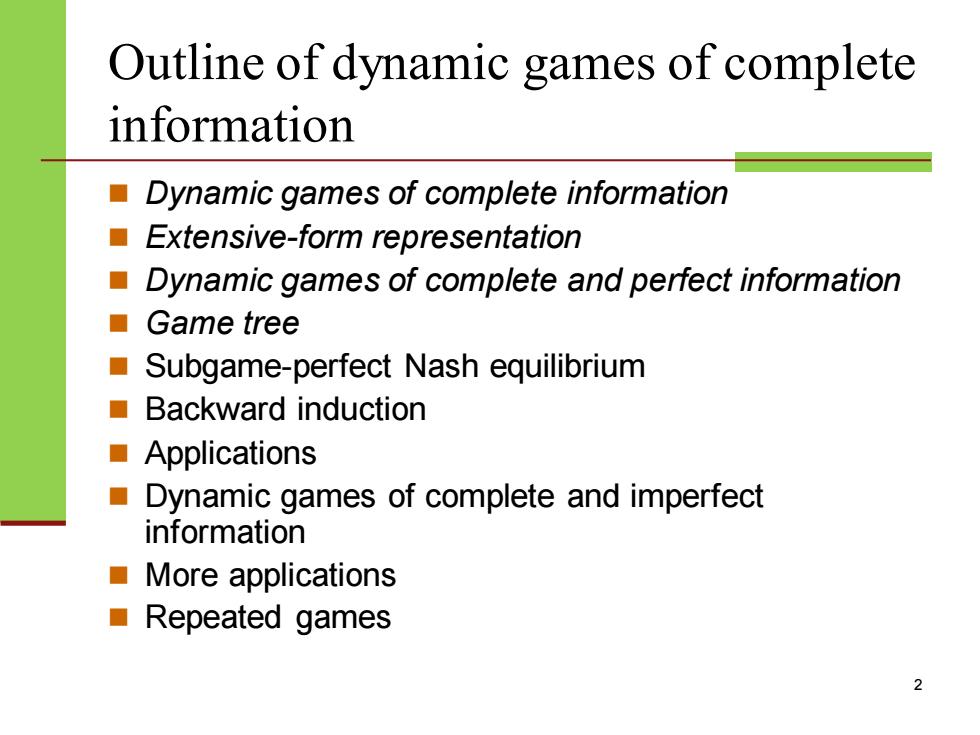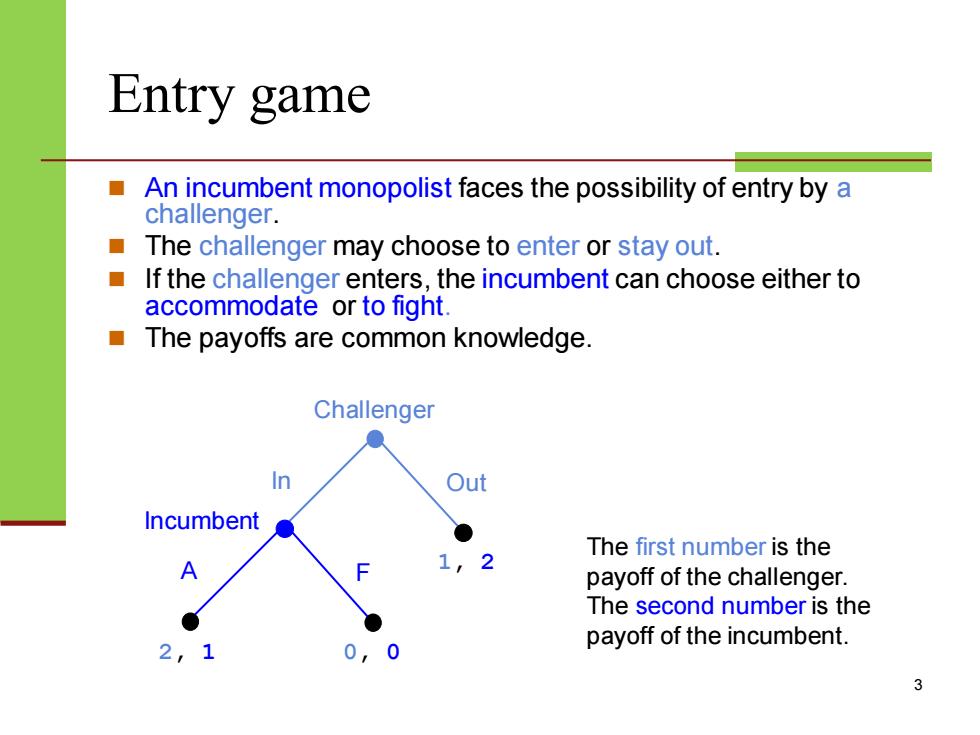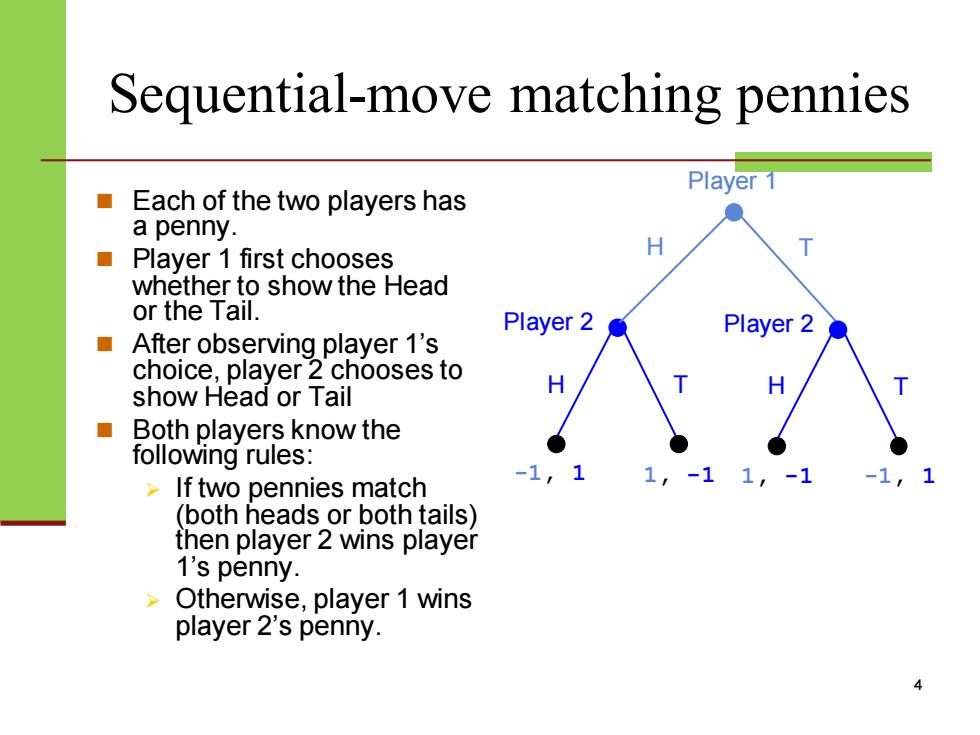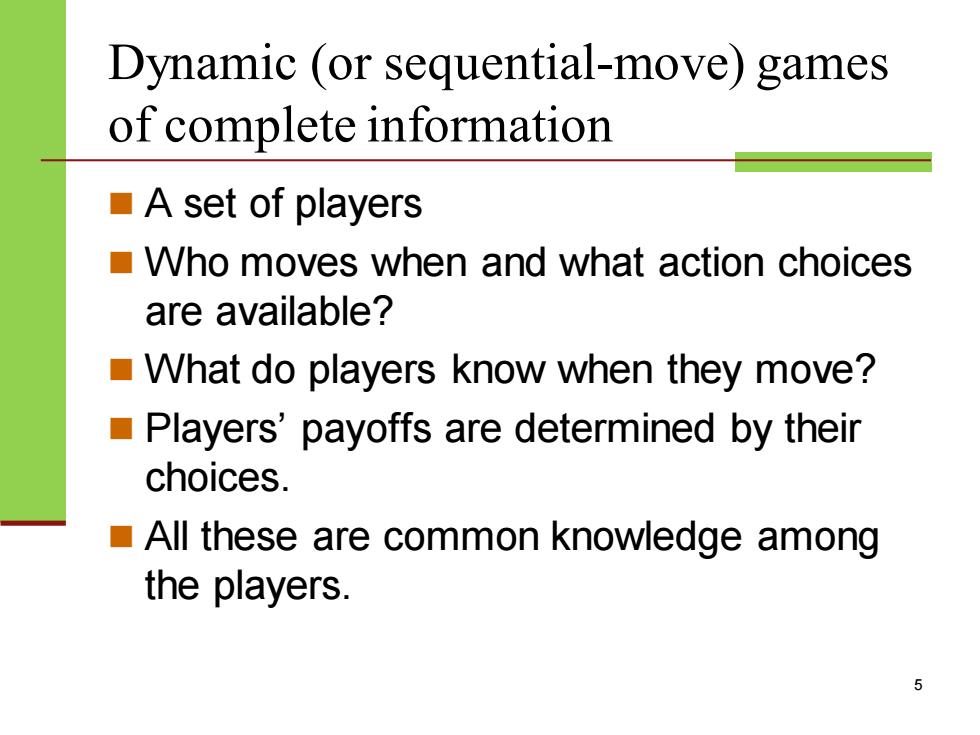
Outline of dynamic games of complete information Dynamic games of complete information ■ Extensive-form representation Dynamic games of complete and perfect information ■Game tree Subgame-perfect Nash equilibrium ■Backward induction ■Applications Dynamic games of complete and imperfect information ■More applications ■Repeated games
Outline of dynamic games of complete information ◼ Dynamic games of complete information ◼ Extensive-form representation ◼ Dynamic games of complete and perfect information ◼ Game tree ◼ Subgame-perfect Nash equilibrium ◼ Backward induction ◼ Applications ◼ Dynamic games of complete and imperfect information ◼ More applications ◼ Repeated games 2

Entry game An incumbent monopolist faces the possibility of entry by a challenger. The challenger may choose to enter or stay out. If the challenger enters,the incumbent can choose either to accommodate or to fight. The payoffs are common knowledge. Challenger In Out Incumbent The first number is the 1 2 payoff of the challenger. The second number is the 2, 0,0 payoff of the incumbent. 3
Entry game ◼ An incumbent monopolist faces the possibility of entry by a challenger. ◼ The challenger may choose to enter or stay out. ◼ If the challenger enters, the incumbent can choose either to accommodate or to fight. ◼ The payoffs are common knowledge. 3 Challenger In Out Incumbent A F 1, 2 2, 1 0, 0 The first number is the payoff of the challenger. The second number is the payoff of the incumbent

Sequential-move matching pennies Player 1 ■ Each of the two players has a penny. Player 1 first chooses whether to show the Head or the Tail. Player 2 Playe After observing player 1's choice,player 2 chooses to show Head or Tail Both players know the following rules: If two pennies match (both heads or both tails) then player 2 wins player 1's penny. Otherwise,player 1 wins player 2's penny
Sequential-move matching pennies ◼ Each of the two players has a penny. ◼ Player 1 first chooses whether to show the Head or the Tail. ◼ After observing player 1’s choice, player 2 chooses to show Head or Tail ◼ Both players know the following rules: ➢ If two pennies match (both heads or both tails) then player 2 wins player 1’s penny. ➢ Otherwise, player 1 wins player 2’s penny. 4 Player 1 Player 2 H T -1, 1 1, -1 H T Player 2 H T 1, -1 -1, 1

Dynamic (or sequential-move)games of complete information ■A set of players Who moves when and what action choices are available? What do players know when they move? Players'payoffs are determined by their choices. All these are common knowledge among the players
Dynamic (or sequential-move) games of complete information ◼ A set of players ◼ Who moves when and what action choices are available? ◼ What do players know when they move? ◼ Players’ payoffs are determined by their choices. ◼ All these are common knowledge among the players. 5

Definition:extensive-form representation The extensive-form representation of a game specifies: the players in the game when each player has the move > what each player can do at each of his or her opportunities to move what each player knows at each of his or her opportunities to move the payoff received by each player for each combination of moves that could be chosen by the players 6
Definition: extensive-form representation ◼ The extensive-form representation of a game specifies: ➢ the players in the game ➢ when each player has the move ➢ what each player can do at each of his or her opportunities to move ➢ what each player knows at each of his or her opportunities to move ➢ the payoff received by each player for each combination of moves that could be chosen by the players 6